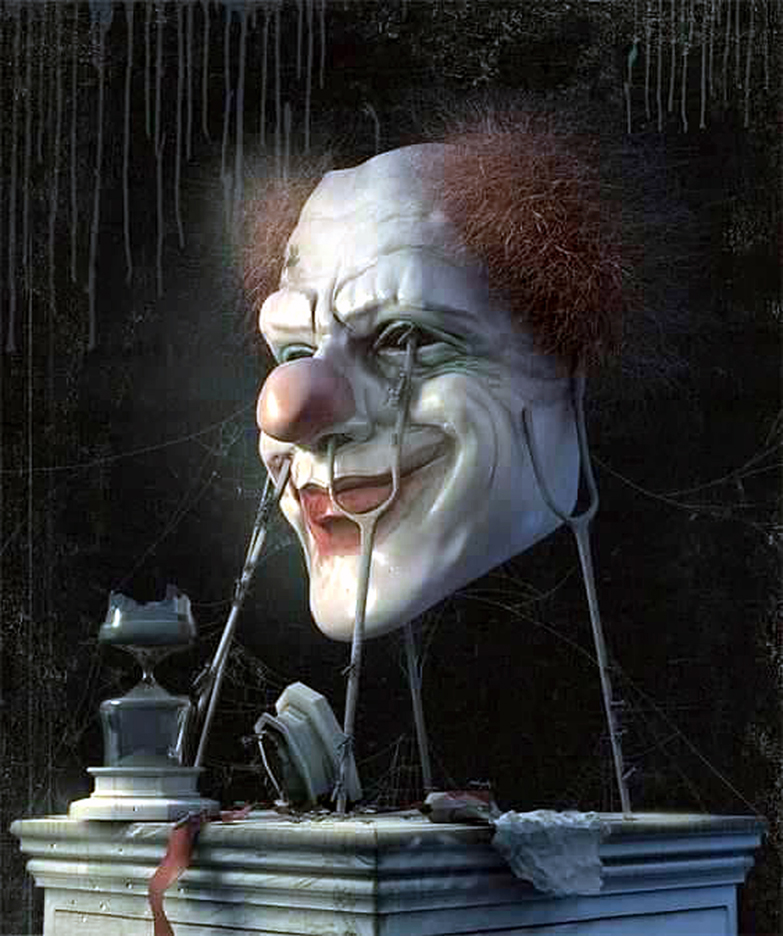Weightlifter’s Dilemma, or Upon Looking at a Surrealist painting by Andrew Ferez

(Photo above is of a clown’s face with purple curly hair and white face paint and a big nose suspended above a desk with a microphone)
What the body lifts and carries
Around like a second skin
It sooner memorizes the weight
As it grows inured to the pain
Clowns must be the unborn
Children of Sisyphus, smile
Despite and in spite of –if they only
Knew art is more than a discipline
Takes a while for the heart to catch up
When it does, it surrenders the key
To a floodgate that opens at three
Next thing you know, each morning
The heart wakes up in a circus tent
Of acrobats juggling heavy objects
Handles them like they’re made of air
Who cares about weightlifting clowns?
——-
Biographical note:
Emeniano Acain Somoza, Jr. considers himself the official spiritual advisor of his roommates, Gordot and Dwight – the first a goldfish, the other a Turkish Van cat. His works have been published in The Poetry Magazine, Moria Poetry Journal, Fogged Clarity, Everyday Poem, Loch Raven Review, The Buddhist Poetry Review, The Philippines Free Press, Troubadour 21, Full of Crow, Indigo Rising, Asia Writes, Triggerfish Critical Review, Troubadors 21, Gloom Cupboard, TAYO, Haggard & Halloo, and elsewhere. His first book, A Fistful of Moonbeams, was published by Kilmog Press in April 2010. His second, Kleenex Theory, published by Createspace-Amazon, came out in 2015. He is busy anthologizing emptiness and boredom at the moment.

The emotional depth and vivid imagery of this poem evokes parallels with the poignant aria “Vesti la giubba” from the opera I Pagliacci. Just as the protagonist in the opera must conceal his inner anguish behind a mask of happiness, so too does the human heart bear countless griefs until they seem weightless and faceless. This burden of sorrow is carried with a façade of resilience and dexterity; an act performed effortlessly for the world to see. Yet, beneath this façade, the person (actor or artist), like the character in the aria, may be slowly dying inside, a poignant reminder of the complexities of human emotion and the sacrifices made for the sake of appearances.
Thank, PNP, you for this insightful commentary.